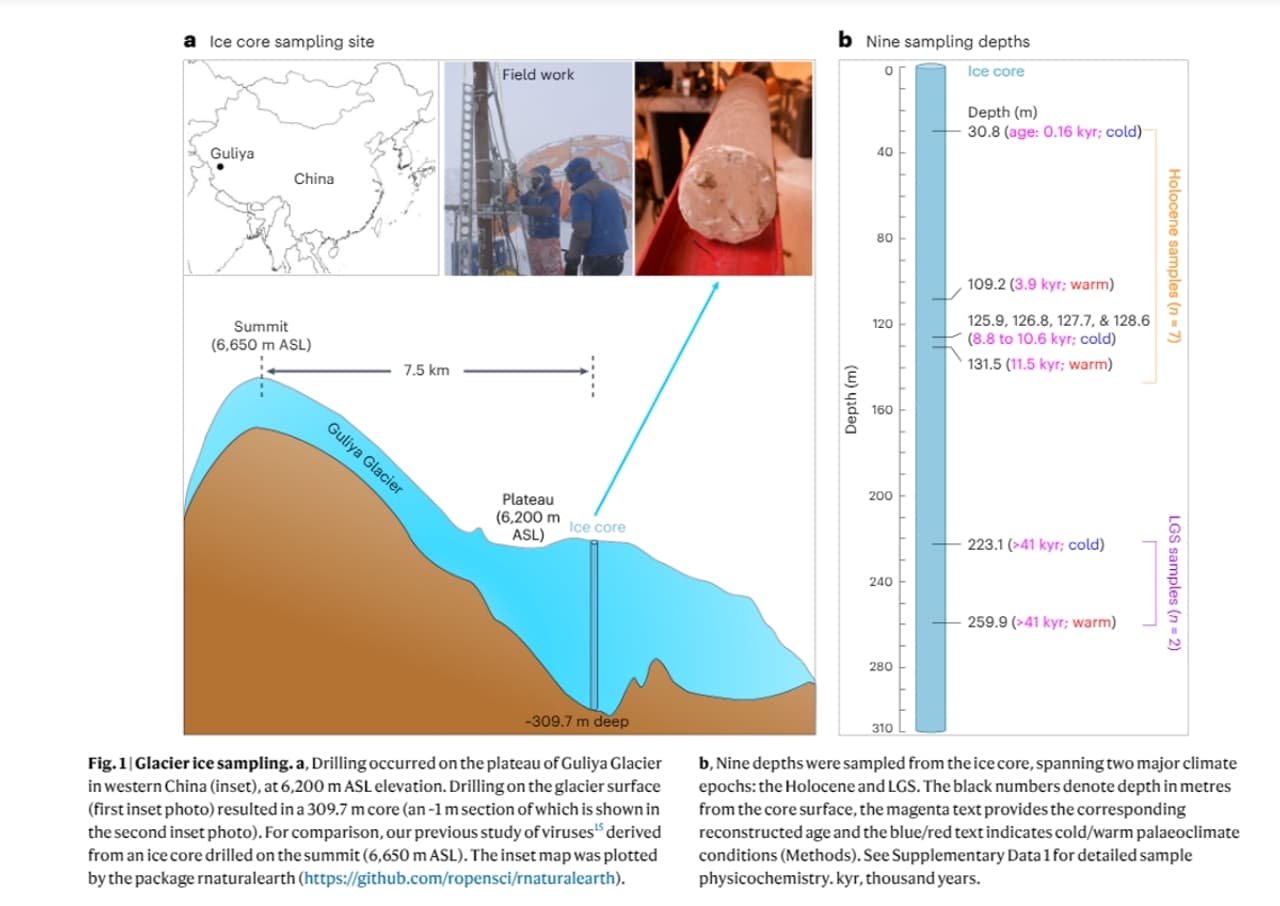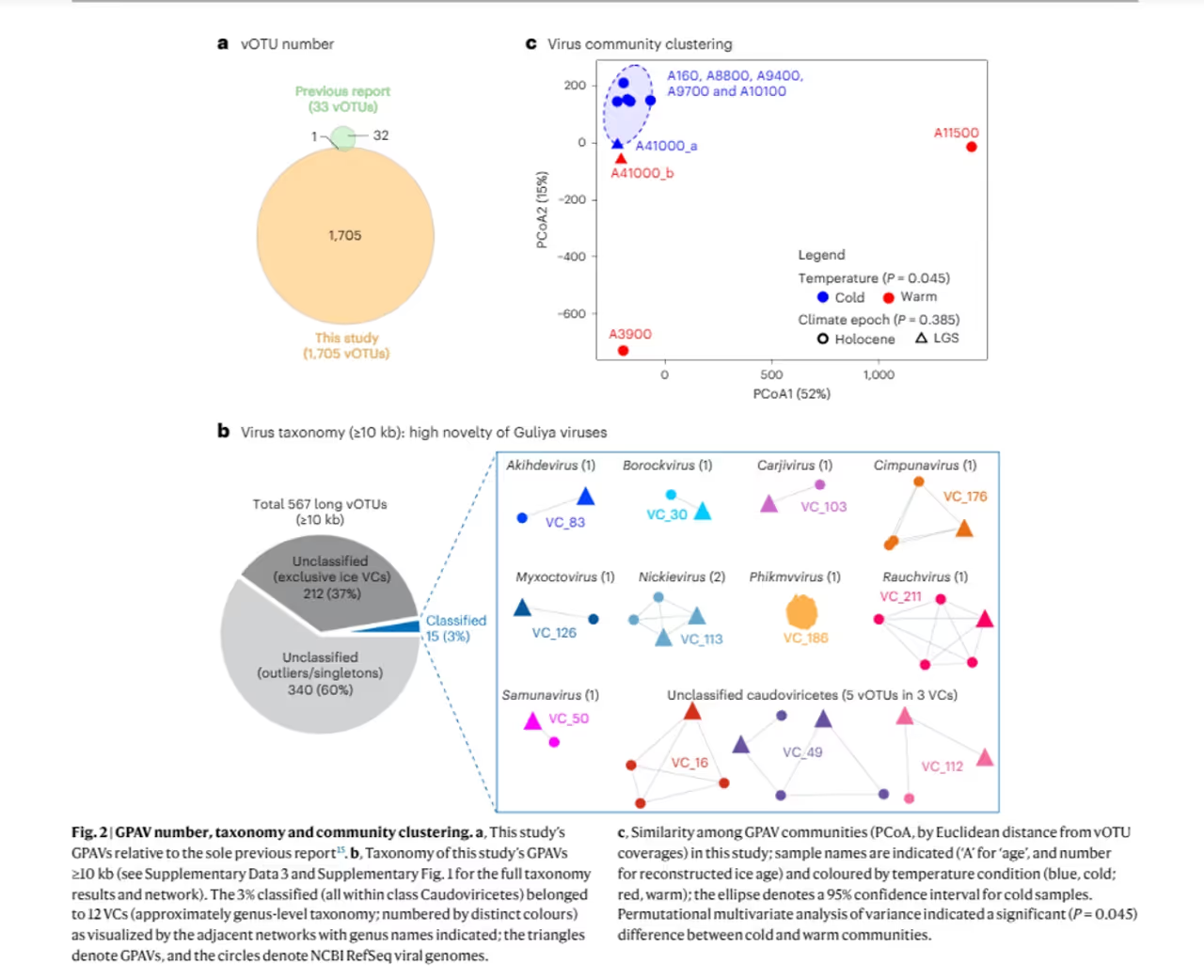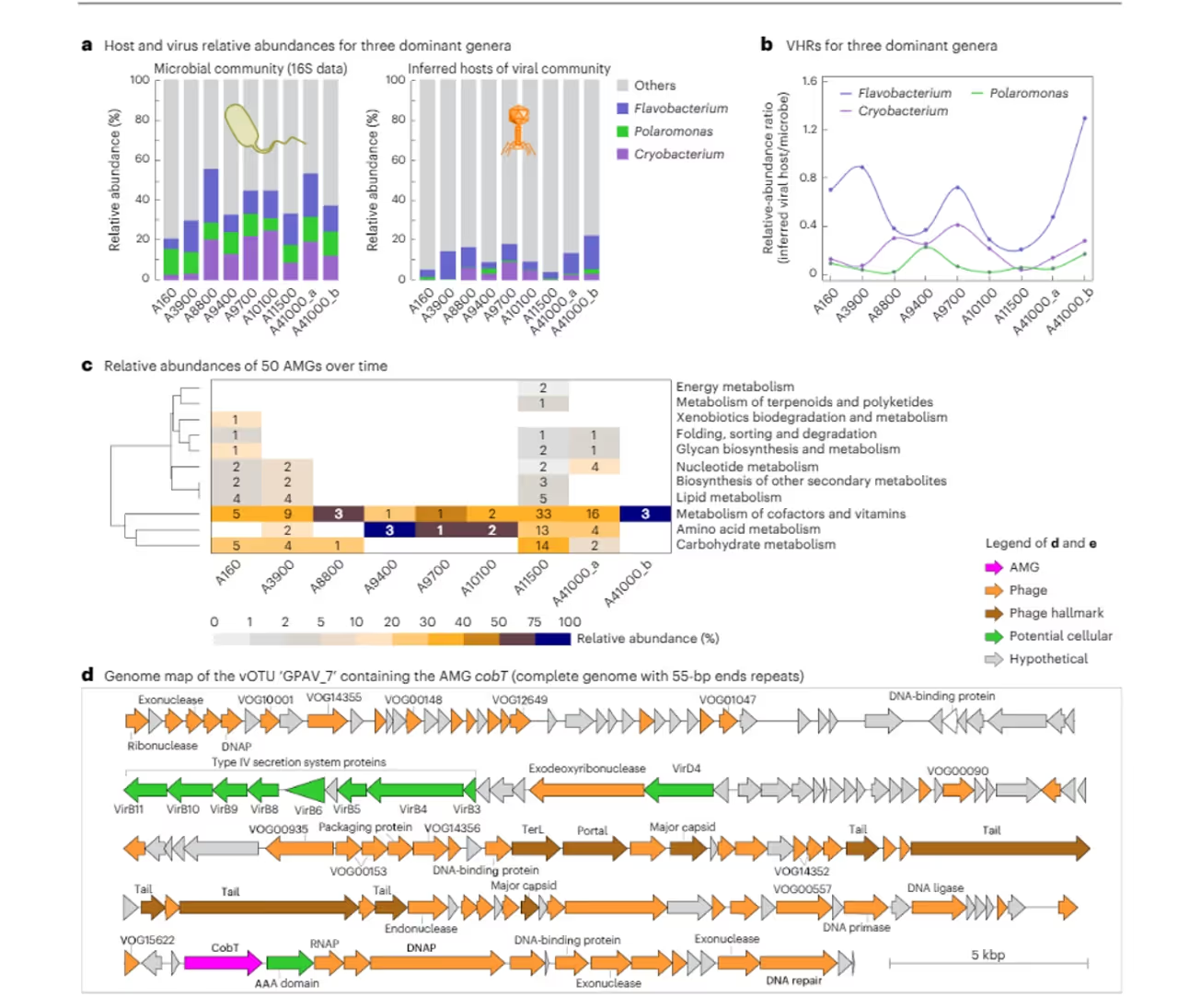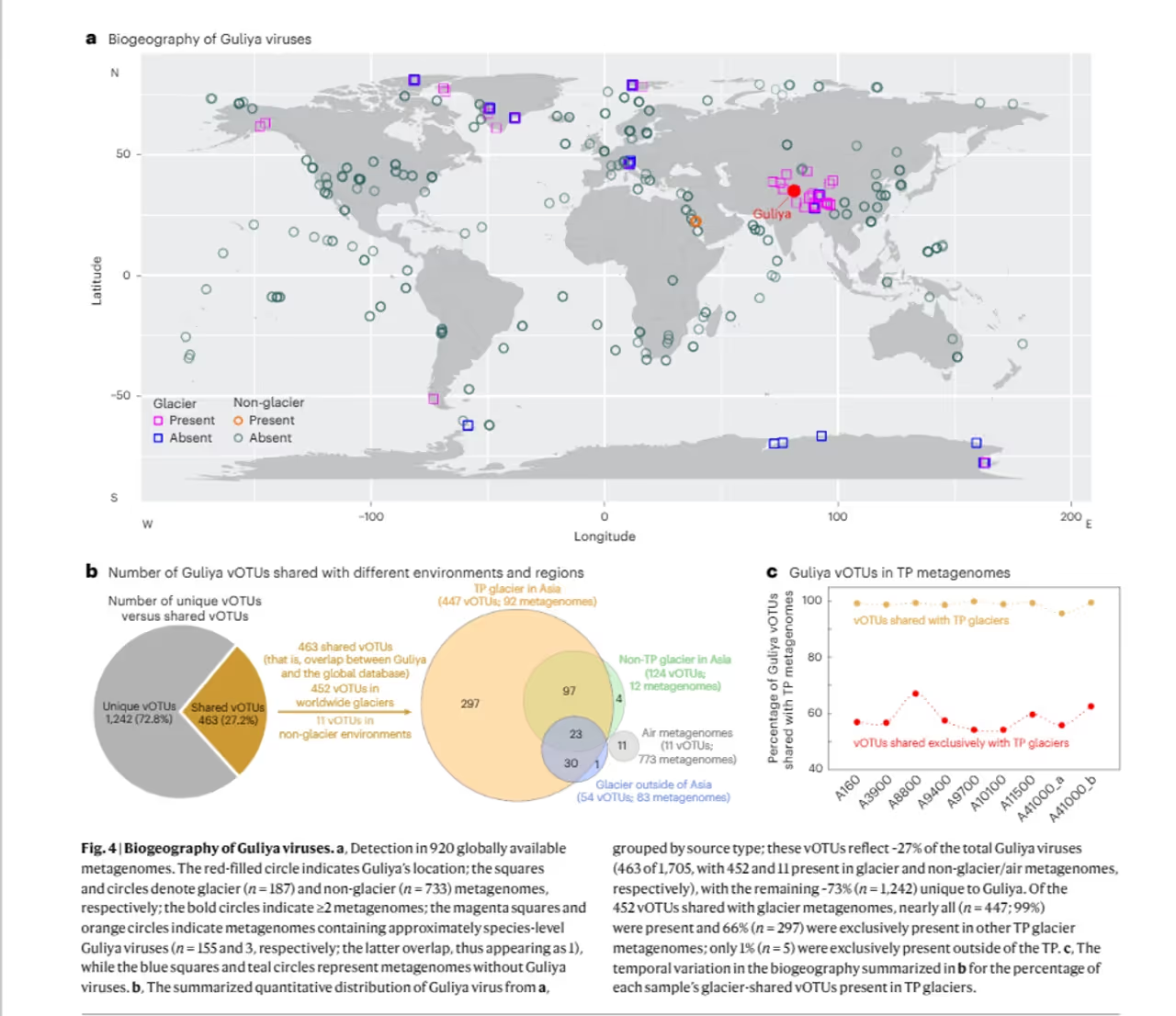In a groundbreaking study, scientists have uncovered over 1,700 ancient viruses hidden deep within a glacier in western China, revealing a trove of previously unknown viral entities.
In a groundbreaking study, scientists have uncovered over 1,700 ancient viruses hidden deep within a glacier in western China, revealing a trove of previously unknown viral entities. The discovery, detailed in a recent publication in Nature Geosciences, underscores both the historical significance of these pathogens and the potential risks associated with global warming.

Details of the discovery
A team of 60 scientists from China and the US undertook the ambitious project to extract and analyze ice cores from the Guliya Glacier, which is situated more than 6,000 meters above sea level. The glacier's unique altitude and environmental conditions have allowed for the preservation of these ancient viruses through multiple climatic eras. The researchers drilled a 10 cm-wide core over 300 meters deep into the glacier, unveiling a wealth of historical viral information.
The viruses were found in an ice core extracted from the Guliya Glacier on the Tibetan Plateau, a region straddling Central, South, and East Asia. The core, which stretches 1,000 feet in length, contained viruses dating back as far as 41,000 years. This period spans several significant climatic transitions, from cold glacial phases to warmer interglacial periods.
The research team, led by microbiologist Matthew Sullivan from The Ohio State University, divided the ice core into nine segments, each representing different climatic eras ranging from 160 years to 41,000 years old. Through metagenomic analysis, the researchers catalogued approximately 50 times more viral information than previously obtained from glacier samples.
Matthew Sullivan, a virologist at the University of Ohio, detailed that retrieving the ice core was only part of the challenge. As reported by ABC News, Sullivan highlighted the importance of preventing contamination from modern viruses, given that glacial ice is exceptionally clean and clear. He emphasized that despite the apparent purity of glacial meltwater, the team had to employ highly meticulous methods to handle and analyze the ancient samples.
“This kind of opportunity represents several disciplines coming together, each with their own scientific languages as a barrier to proceed,” he said. “But getting to study ancient viruses and microbes in ice with this team is a testament to the support we had to explore new interfaces.”

Study insights and implications
The study's findings reveal how viral communities have evolved in response to climatic changes over millennia. “These time horizons span three major cold-to-warm cycles, providing a unique opportunity to observe how viral communities have changed in response to different climatic conditions. By studying these ancient viruses, we gain valuable insights into viral response to past climate changes, which could enhance our understanding of viral adaptation in the context of ongoing global climate change,” ZhiPing Zhong, first author of the new study and paleoclimatologist at Ohio State University added.
Erin Harvey, a virologist not involved in the study, highlighted potential future impacts. Harvey said, “If a virus evolves to infect and kill a certain bacterial species that can push the abundance of that microbial species down. Or maybe the virus could evolve to help that microbial species, and then the population would expand.”


Should humans be worried?
The study’s release coincided with a viral social media moment involving rapper-turned-actor Chris 'Ludacris' Bridges, who posted a video of himself drinking meltwater from an Alaskan glacier. The video, which garnered millions of views, prompted concerns about the safety of consuming untreated glacier water. However, glaciologist experts quickly reassured the public that water from glacial melt streams is typically very clean.
“Glaciers represent some of the cleanest environments on Earth,” Lonnie Thompson, co-author of a new study, commented. “[We] routinely drink meltwater from these glaciers when we are drilling the ice cores.”
The public's concerns are not entirely without basis. Melting permafrost in various regions globally has previously revealed deadly pathogens, raising fears about potential outbreaks.
For instance, in 2016, anthrax spores were released from an animal carcass that had been frozen in Siberian permafrost for 75 years. This incident led to dozens of hospitalizations and the death of one child.
Fortunately, researchers have confirmed that none of the 1,700 viruses identified in this recent study pose any risk to human health. These viruses are only capable of infecting archaea—single-celled organisms—and bacteria, and do not affect humans, animals, or plants.
“Before this work, how viruses linked to large-scale changes in Earth’s climate had remained largely uninvestigated,“ said ZhiPing Zhong. “Glacial ice is so precious, and we often don’t have the large amounts of material required for virus and microbe research.”
Studying these viruses is crucial, however, as they provide valuable insights into Earth's ancient climate history and may help us predict the composition of future microbial communities.
